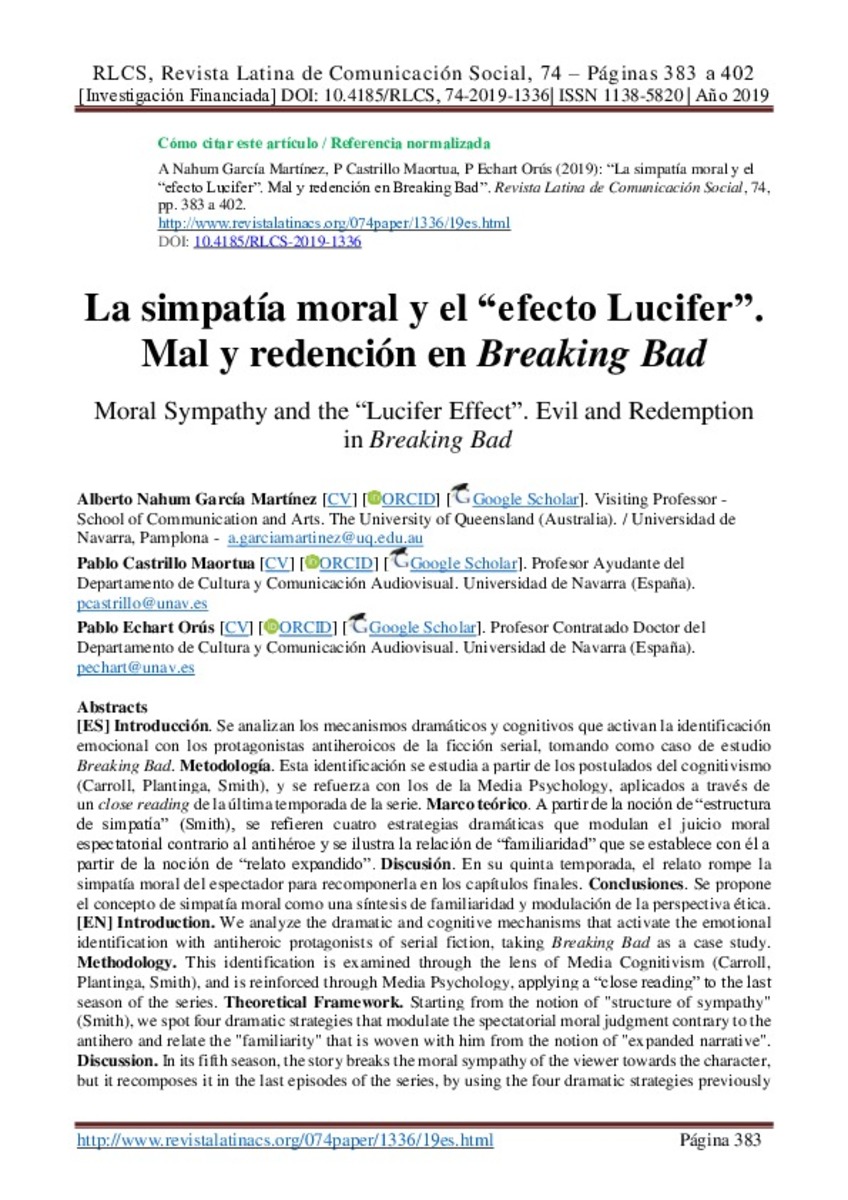Moral sympathy and the “Lucifer effect.” Evil and redemption in Breaking Bad
Otros títulos :
La simpatía moral y el “efecto Lucifer”. Mal y redención en Breaking Bad
Palabras clave :
Television Studies
Moral Emotions
Breaking Bad
Antiheroes
Fecha de publicación :
feb-2019
Nota editorial :
Journal Open Access
Nota:
Creative Commons Reconocimiento-No comercial-Sin obras derivadas 3.0 España License.
Cita:
Revista Latina de Comunicación Social
Aparece en las colecciones:
Estadísticas e impacto
0 citas en

0 citas en

Los ítems de Dadun están protegidos por copyright, con todos los derechos reservados, a menos que se indique lo contrario.








